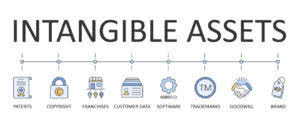What type of account is an allowance for doubtful accounts?

With accounting software like QuickBooks, you can access important insights, including your allowance for doubtful accounts. With such data, you can plan for your business’s future, keep track of paid and unpaid customer invoices, and even automate friendly payment reminders when needed. The Pareto analysis method relies on the Pareto principle, which states that 20% of the customers cause 80% of the payment problems.
Start with a free account to explore 20+ always-free courses and hundreds of finance templates and cheat sheets. The adjustment process involves analyzing the current accounts, assessing their collectibility, and updating the allowance accordingly. In other words, accumulated depreciation will be $10,000 each year until the car depreciates to $0 twenty years later. The auditors aim to keep the balances at their adequate levels, but the controller might want to keep them as low as possible to reduce expenses and maximize profit levels. Contra Accounts serve as a reduction to the balance of their corresponding accounts to find their net values.
Real-time credit health with AI-based credit scoring models
The accounts receivable aging method is a report that lists unpaid customer invoices by date ranges and applies a rate of default to each date range. Adjusting the allowance for doubtful accounts is important in maintaining accurate financial statements and assessing financial risk. For example, a jewelry store earns $100,000 in net sales, but they estimate that 4% of the invoices will be uncollectible. The allowance for doubtful accounts is an estimate of the portion of accounts receivable that your business does not expect to collect during a given accounting period.

This adjustment helps maintain accurate financial records by accounting for potential bad debts and helps businesses prepare for future bad debts. With the account reporting a credit balance of $50,000, the balance sheet will report a net amount of $9,950,000 for accounts the allowance for doubtful accounts is a contra asset account that equals receivable. This amount is referred to as the net realizable value of the accounts receivable – the amount that is likely to be turned into cash. The debit to bad debts expense would report credit losses of $50,000 on the company’s June income statement.
How to Estimate the Allowance for Doubtful Accounts
Management may disclose its method of estimating the allowance for doubtful accounts in its notes to the financial statements. Two primary methods exist for estimating the dollar amount of accounts receivables not expected to be collected. If it does not issue credit sales, requires collateral, or only uses the highest credit customers, the company may not need to estimate uncollectability.
- Most balance sheets report them separately by showing the gross A/R balance and then subtracting the allowance for doubtful accounts balance, resulting in the “Accounts Receivable, net” line item.
- The estimated bad debt percentage is then applied to the accounts receivable balance at a specific time point.
- They are used in case some customers won’t be able to pay the money they owe to the business.
- If a customer ends up paying (e.g., a collection agency collects their payment) and you have already written off the money they owed, you need to reverse the account.
- Yes, GAAP (Generally Accepted Accounting Principles) does require companies to maintain an allowance for doubtful accounts.
- To make things easier to understand, let’s go over an example of bad debt reserve entry.
